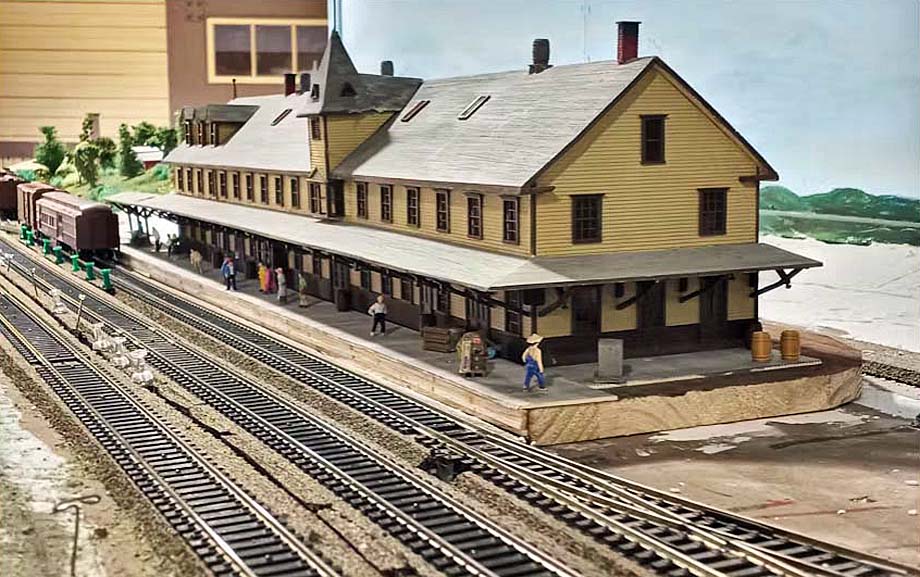
Kentville Nova Scotia - In his talk at the Kentville Historical Society on 21 Mar 2024 Windsor-born
Fred Huntley reminisced about growing up around trains.
Huntley said he saw his first train in Hants County.
This was in Upper Burlington when he was eight-years-old, and it was "a double-header gypsum train westbound that
simply amazed me."
The theme of Huntley's talk at the society meeting was the history of the Kentville train station.
And as the talk progressed, Huntley's life-long love affair with the railway became obvious.
Huntley's passion led him to develop a remarkable skill in building miniature to-scale railway theme
models.
One of the miniature models he created, the Kentville railway station as it looked about 100 years ago, was displayed
at the meeting.
In his talk, Huntley noted that the first Kentville railway station was built in 1870.
At the time, the railway's headquarters was in Wolfville, but this was a temporary situation.
The lack of available land in Wolfville for what would become a sprawling rail yard encompassing about eight acres at
first, prompted the move to Kentville.
As a result, Kentville developed into a major commercial and industrial center.
The railway's addition of a major hotel in 1930, the Cornwallis Inn, cemented Kentville's position as first among
towns in the province.
In 1902, planning began for a major enlargement of the Kentville station.
This was completed in 1904 with enlarged space and the addition of a center tower and a freight shed.
At this time a track was added on the north side of the station for the Cornwallis Valley Railway (CVR) which ran daily
to Kingsport.
There were further renovations in 1920 with an additional 40 feet added to the size of the station.
Huntley commented, in effect, that it was a sad state of affairs when the station was torn down in 1990.
While there appeared to be several parties interested in saving the station, no real effort was made, and the axe came
down.
If readers are curious why a track was laid beside the station for the convenience of the CVR, I can
explain.
At first a privately-owned line that opened circa 1890, the CVR was purchased by the Dominion Atlantic Railway and the
daily runs to Kingsport and points along the way were continued.
The train stopped at Aldershot Camp and Canning, and was flagged down at other communities along the way, including
Centreville and Gibson Woods, for example.
Note: As a paperboy, I would pick up the daily newspaper that was dropped off by the late morning train from
Halifax.
Then, walking through the station, I got on the CVR train for 25 cents and went to Aldershot Camp to sell
papers.
Once the westbound train left for Yarmouth, the tracks were switched over so the CVR could run to Kingsport where, if
the tides were right, it connected with the ferry Kipawo.
Ed Coleman, who resides in Kentville, is a bi-weekly columnist who has a keen interest in history, particularly that of
Kings and Hants counties.
Ed Coleman.
(likely no image with original article)
(usually because it's been seen before)
provisions in Section 29 of the
Canadian Copyright Modernization Act.
